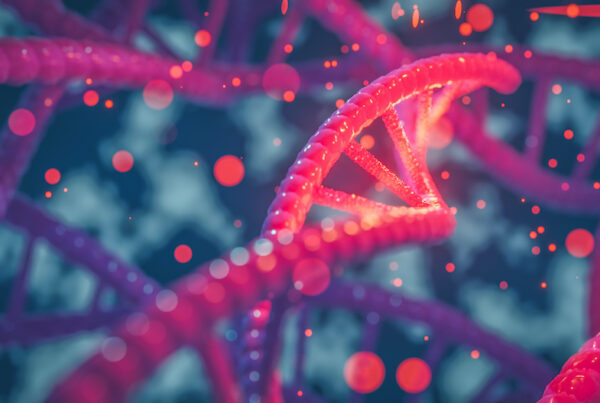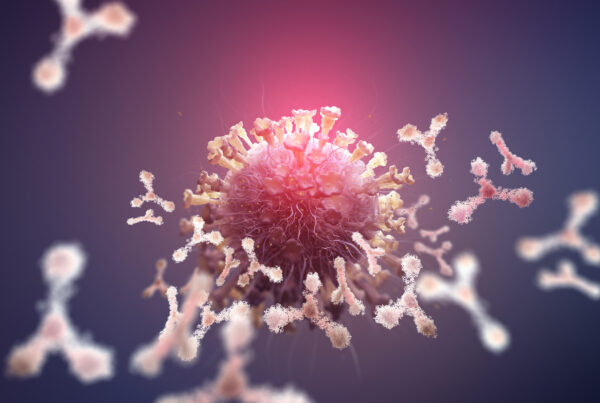Sexual problems can be difficult and embarrassing to talk about. But if you’re suffering from performance issues or a low sex drive, rest assured that you are not alone. According to a number of studies looking into modern sexual activity and behavior among American adults, fewer people are having sex on a regular basis than earlier generations. In fact, statistics show that the rate of sexual activity among American adults has plummeted to the lowest levels since the Great Depression.
While human sexuality may still be something of a taboo topic that can be difficult to talk about, many performance and libido issues are associated with health issues and hormonal imbalances in both men and women. Like any biological process, the human sex drive is subject to a number of chemical, environmental, and physiological factors that are often beyond an individual’s control.
The good news is that many sexual problems that were once swept under the rug or accepted as a normal part of life and the aging process are now being examined — and treated — through the dual lenses of science and medicine.
PT 141 (Bremelanotide): A Libido Enhancer for Men and Women
Iconic actress and wellness and longevity enthusiast Suzanne Somers made headlines recently when she admitted that she and her husband of 42 years Alan Hamel have sex every day — twice a day. Their secret? In addition to a decades-long committed marriage, Somers admitted to getting a little help keeping her sex drive active with shots of PT 141, a peptide libido enhancer for women that can help to increase the female sex drive.
Somers, who turned 73 this year, admitted to the media that she and her husband still get the urge and enjoy regular sexual arousal (unlike many people half their age and even younger), and she credits what she referred to as “sex shots” of PT 141 with their busy and active sex life.
(As a side note, while PT 141 is frequently discussed in regard to female libido, it’s also useful in men, as well – more on that later!)
The Female Viagra — or Something More?
PT 141 is a melanocortin-based peptide that can be used by both men and women to help improve a low sex drive/libido, but it was designed with premenopausal women in mind.
Melanocortin peptides are responsible for a number of biological functions and responses in the human body including:
- Feeding
- Grooming
- Sensitivity to pain (hyperalgesia)
- Fever
- Cardiovascular activity
- Neural activity
- Inflammation/inflammatory response
- Social behavior
- Sexual behavior
According to the U.S. Food and Drug Administration’s (FDA) statement on the approval of bremelanotide for hypoactive sexual desire disorder (HSDD) in women:
““There are women who, for no known reason, have reduced sexual desire that causes marked distress, and who can benefit from safe and effective pharmacologic treatment. Today’s approval provides women with another treatment option for this condition,” said Hylton V. Joffe, M.D., M.M.Sc., director of the Center for Drug Evaluation and Research’s Division of Bone, Reproductive and Urologic Products. “As part of the FDA’s commitment to protect and advance the health of women, we’ll continue to support the development of safe and effective treatments for female sexual dysfunction.”
HSDD is characterized by low sexual desire that causes marked distress or interpersonal difficulty and is not due to a co-existing medical or psychiatric condition, problems within the relationship or the effects of a medication or other drug substance. Acquired HSDD develops in a patient who previously experienced no problems with sexual desire. Generalized HSDD refers to HSDD that occurs regardless of the type of sexual activity, situation or partner.”
However, as Somers and her husband illustrate, the benefits of PT 141 can be enjoyed by women of all ages, as well as their male partners.
 What Does Bremelanotide Do?
What Does Bremelanotide Do?
Bremelanotide is a synthetic peptide and melanocyte-stimulating hormone (MSH) that works by sparking sexual arousal in women (and may help with erections in men). It consists of seven amino acids and is categorized as a melanocortin receptor agonist. When an agonist binds to a specific receptor it triggers a biological response, such as the release (or suppression) of a hormone or chemical signal.
Human sexuality and desire is a complicated process that isn’t entirely understood, even by science. As Somers pointed out using an example from her own experience, the goal of PT 141 is to replicate the biological process that helps to put people — specifically women — “in the mood.” Bremelanotide goes directly to the source to trigger the mechanisms that control arousal and desire in the brain.
How to Take PT 141
The most common way to administer PT 141 is through a subcutaneous injection in the abdomen or thigh. It has also been manufactured as a nasal spray. The FDA guidelines recommend that PT 141 be taken about 45 minutes to an hour before sexual activity, once every 72 hours (but no more than eight times per month). Like any medication and form of peptide therapy, the results and potential side effects will vary from person to person.
The most common potential side effects include:
- Nausea
- Vomiting
- Headaches
- Increased blood pressure
- Discomfort at the injection site
Bremelanotide is also available through the intranasal application (nasal spray). Some of the most common allergy medications and decongestants are prescribed or sold over the counter in intranasal form. Nasal sprays like Afrin consist of antihistamines and act as decongestants, while products like Flonase contain corticosteroids for conditions like rhinitis.
Due to the possibility of an increase in blood pressure, the treatment is not recommended for people with cardiovascular issues or concerns.
Is PT 141 Intranasal Spray Safe?
The intranasal spray has undergone numerous clinical trials to test its safety and effectiveness over the last two decades. According to the results of one study published in Clinical Therapeutics:
A total of 24 participants were enrolled (12 men; 12 women) and completed the study. Single doses of 20 mg intranasal BMT, administered with or without 0.6 g/kg ethanol, were found to be safe and generally well tolerated with mean maximum ethanol concentrations exceeding 80 mg/dL in women.
No clinically significant pharmacokinetic interactions were found between ethanol and BMT either overall or by sex. No significant drug-related hypotensive or orthostatic hypotensive effects were noted. Treatment with BMT did not result in an increased frequency of treatment-emergent adverse events, and no participants discontinued the study because of adverse events. Physical examination, electrocardiography, and laboratory tests disclosed no clinically significant changes.
How Does Intranasal Medication Work?
The nasal cavity contains a rich network of blood vessels that makes it an ideal conduit to get medication directly into the bloodstream as quickly as possible. This is especially useful when taking a number of different peptide therapies, some of which are broken down into their individual amino acid components when taken orally and digested in the stomach before they reach the bloodstream.
With a medication like PT 141, quick absorption and fast response times are especially important relative to the purpose of the medication. Sexual arousal may be a complicated chemical dance that begins in the brain for both men and women, but the last thing anyone wants is to have to wait hours or days to get in the mood.
According to the American Journal of Rhinology and Allergy, delivering medication through the nasal mucosa can reduce the risk of adverse effects and improve quality of life.
Your healthcare provider can help you decide whether the PT 141 shot or intranasal spray is best for you.
Hypoactive Sexual Desire Disorder (HSDD) in Women
There are a number of factors that affect female sexuality and sexual desire. During and after menopause, hormonal fluctuations and changes in the body can lead to a decline in arousal and sexual desire for many women. But the loss of interest in sex and lower arousal and libido can affect women of all ages and at different stages in life.
Sexual activity and preferences vary from person to person, so the concept of a “normal” sex drive is relative and can depend on a number of circumstances that include biological, emotional, environmental, situational, and cultural factors.
The general symptoms of Hypoactive Sexual Disorder include:
- Complete lack of interest in all forms of sexual activity including masturbation
- Limited or total absence of sexual thoughts and fantasies
- Feeling concerned over your lack of sexual thoughts and desires
According to The Society for Women’s Health Research, approximately one in ten women are believed to suffer from HSDD. However the numbers may actually be higher for women that don’t discuss or seek treatment for their symptoms. If you feel concerned or are experiencing distress over your lack of sexual desire and arousal, you may be suffering from HSDD.
 PT 141 Doesn’t Just Boost Libido in Women
PT 141 Doesn’t Just Boost Libido in Women
While a lot of discussion around PT 141 and libido focuses on women, it has uses in men, too. In one study, the administration of PT 141 in both normal men and men with erectile dysfunction led to increased erectile activity.
PT 141 works in a fundamentally different way from drugs like Cialis and Viagra. Those drugs encourage vasodilation in smooth muscle tissue, leading to increased blood flow. This can make it easier for someone to achieve an erection – yet it still requires sexual arousal to work.
Sometimes, for men with ED or other sexual performance disorders, a combination of Viagra or Cialis and PT 141 can be effective.
Sexual Arousal Starts in the Brain for Men, Too
ED drugs like Viagra and Cialis target the circulatory system to stimulate the physical response that results in an erection. PT 141 targets the neurons in the brain that stimulate arousal and the desire to have sex. But according to the participants of some of the early clinical trials, PT 141 does a lot more than help men to become aroused and achieve an erection, and many men notice additional positive effects beyond what they experienced by just taking Viagra. According to some of the men quoted in a profile of in New York Magazine:
“With PT-141, you feel good, not only sexually aroused,” reported anonymous patient 007, a participant in a Phase 2 trial, “you feel younger and more energetic.” Said another patient: “It helped the libido. So you have the urge and the desire… . You get this humming feeling; you’re ready to take your pants off and go.”
And another: “Twice me and my wife had sex twice in one night. I came in [to work] and I just raved about it: ‘Jesus, guys … 58 years old and you don’t do that.’ ” Tales of pharmaceutically induced sexual prowess among 58-year-olds are common enough in the age of the Little Blue Pill, but they don’t typically involve quite so urgent a repertoire of humming, throbbing, tingling, and double-dipping. Or as patient 128 put it: “My wife knows. She can tell the difference between Viagra and PT-141.”
Sexual Arousal and Desire: The Differences Between Men and Women
It might not be very sexy to think about it this way, but like other human biological functions and processes, sexual arousal and desire is ultimately a science that hasn’t been very well researched or understood up to this point.
The development and commercial production of common ED medications over the last few decades have gone a long way towards breaking down the stigmas surrounding sexual dysfunction, but the lack of information and social attitudes still make it hard for many men and women to get the help they need.
According to a report by the American Psychological Association (APA):
“At the Kinsey Institute, Janssen and John Bancroft, MD, the institute’s director, have been developing a theoretical model and a set of measurement tools that define sexual arousal as the product of excitatory and inhibitory tendencies.
Early research on the model suggests that while a single factor accounts for all of the variation among men in their tendency to become sexually excited (SES), there are two inhibitory factors–one that represents inhibition due to the threat of performance failure (SIS1) and one that represents inhibition due to the threat of such performance consequences as an unwanted pregnancy or a sexually transmitted disease (SIS2).
One implication is that people with different levels of SES, SIS1 and SIS2 will respond differently to different kinds of stimuli, says Janssen. In one study, for instance, Janssen, Bancroft and their collaborators found that people who scored highly on SIS2 were less likely to be aroused by erotic films that included threatening stimuli than people with low SIS2 scores.”
Understanding the complex levers involved in arousal and desire are an important step towards developing solutions for both sexes.
For example, according to APA, men who generally don’t have problems with arousal tend to view occasional problems with performance more positively than men who struggle with arousal on a more regular basis. The latter group tends to internalize sexual problems and take them more personally, whereas the former group tends to attribute occasional difficulties with outside and temporary factors like stress, physical exhaustion, or outside environmental factors.
Research into female sexual dysfunction and sexuality has been much more limited and is, therefore, less understood than in men, which makes the development and FDA approval of PT 141 especially groundbreaking.
Common Myths About Erectile Dysfunction (ED)
With so many myths and disinformation surrounding the subject of ED, it’s important to set the record straight and separate the myths from the medical facts. One of the biggest and most pervasive myths about ED is that it’s a normal and inevitable part of the aging process for men.
Not only can ED affect men of all ages and backgrounds, but it is often a sign of an underlying health problem like depression, anxiety, diabetes, obesity, heart disease, high blood pressure, and substance abuse among many others.
In the United States, where over 30% of men experience at least one period of depression in their lifetime and one in three will take medication for depression according to the APA, it’s not surprising that approximately 30 million American men suffer from some form of ED. When you factor in the prevalence of serious and pervasive health problems like diabetes and heart disease, ED is much more than a problem for older men.
Other common myths and misconceptions about ED include:
- ED is caused by a lack of attraction or interest in your partner
- ED is a personal failing
- ED is “all in your head”
- ED is permanent or hopeless
- ED is caused by a lack of interest in sex
- ED is just a man’s problem
The best way to think about sexual dysfunction is as a medical condition that affects everyone differently and requires a personalized approach to treatment. For some men, taking an ED medication like Viagra or Cialis may be enough. For others, combining ED medications with PT 141 is more effective. As with any health condition, the treatment that works best for you will depend on the underlying causes.
Underlying Factors That Can Affect Your Sex Drive
As we’ve established, there are many factors that can interfere with normal sexual activity and sex drive in both men and women, from hormonal fluctuations to medication and emotional issues. Understanding how your health and lifestyle affect your sexual wellbeing is important in order to find the best treatment and solution if low libido is causing problems and affecting your quality of life.
Some of the most common causes of HSDD in women include:
- Diabetes
- Heart disease
- Cancer
- MS (multiple sclerosis)
- Depression
- Anxiety
- Hypothyroidism
- Arthritis
- Antidepressant medication
- Antipsychotic medication
- Beta-blockers
- Benzodiazepines
- Birth control pills
- Opioids
- Pregnancy
- Breastfeeding
- Menopause
- Stress
- Fatigue
- Pain during sex
- Relationship issues
Likewise, men can be impacted by a whole host of issues that might decrease their libido, such as low testosterone, high blood pressure, depression, anxiety, stress, kidney disease, certain medications, and many, many more.
While there are more options for treating and managing sexual dysfunction than ever, there is no one size fits all approach to help people dealing with sexual problems and dissatisfaction with their sex life. PT 141 is generally recommended for women experiencing low libido and problems with arousal that are not caused by a medical condition or problems within the relationship.
 When to Seek Help for a Low Sex Drive or Lack of Libido
When to Seek Help for a Low Sex Drive or Lack of Libido
Even people with active, healthy sex lives and a sustained interest in having sex experience peaks and valleys from time to time, so the occasional dip in sexual activity and lower arousal rates doesn’t necessarily indicate a problem.
However if you’re concerned about a noticeable drop in your libido or prolonged lack of arousal, it may be time to seek help for your symptoms. In addition to causing stress and potentially affecting your personal quality of life, changes and drops in libido can also lead to problems in your relationship. Everyone’s sex life is different, so only you can decide what is “normal” for your relationship.
Your Brain Chemistry and Sex
It may not sound very romantic, but like every other biological process, arousal and sex stem from a series of chemical reactions in the brain which depend on the release and flow of good old peptides and hormones. According to an article in Harvard Health, if sexual activity were broken down into a simple linear equation, it might look something like this:
- Lust (testosterone and estrogen)
- Attraction (dopamine, norepinephrine, and serotonin)
- Attachment (oxytocin and vasopressin)
While the factors that actually trigger lust, attraction, and ultimately the desire to attach to a partner vary from person to person and can be incredibly complex, on a biological level sex comes down to a series of chemical reactions, just like every other process in the human body.
Peptide therapy looks at ways to help these biological processes continue to function as nature intended, and to optimize performance when possible by creating synthetic versions of naturally occurring peptides and proteins.
But peptide therapy can also go a step further by creating amino acid chains that don’t actually develop in the human body on their own. This gives scientists and researchers the opportunity to come up with new treatments for a number of health concerns that affect millions of adults every year, like PT 141 to help increase female sex drive.
The Difference Between Lack of Arousal and Lack of Desire
Sexual arousal works differently in men and women, and although some of the terms tend to be used interchangeably, there are distinctions between the desire to have sex and actual sexual arousal.
According to the Cleveland Clinic:
“Sexual dysfunction refers to a problem occurring during any phase of the sexual response cycle that prevents the individual or couple from experiencing satisfaction from the sexual activity. The sexual response cycle traditionally includes excitement, plateau, orgasm, and resolution. Desire and arousal are both part of the excitement phase of the sexual response.
While research suggests that sexual dysfunction is common (43 percent of women and 31 percent of men report some degree of difficulty), it is a topic that many people are hesitant to discuss. Because treatment options are available, it is important to share your concerns with your partner and healthcare provider.”
Sexual problems and dysfunction can be broken down into different types of disorders including arousal disorder, desire disorders, orgasm disorders, and pain disorders depending on the symptoms. With a desire disorder, people experience a temporary or long term lack of interest in having or even thinking about sex. With an arousal disorder, people struggle to become physically aroused and excited to perform sexual acts. So in some cases, it’s possible to want to have sex (desire) and still struggle to become aroused.
In men, the most common symptoms of sexual dysfunction are difficulty with erections and ejaculation. In women, the most common symptoms are difficulty achieving orgasm and vaginal lubrication, as well as pain.
Sexual Dysfunction and Age
Low libido and diminished sex drive are typically associated with people over the age of 40, but it can (and does) affect people of all ages. As men and women get older, testosterone and estrogen levels naturally drop, which affects the desire-arousal-sex matrix. However, as Suzanne Somers and many people that continue to enjoy healthy and active sex lives well into their golden years have shown, a healthy sex life is not just for the young.
In fact, there is a mountain of evidence that shows that not only can people over 50 continue to enjoy sex, but there are a number of positive health benefits to doing so at every age. According to AARP, some of the many health benefits of continuing to enjoy sex several times a week as you get older include:
- Improved sleep
- It can make you look and feel younger (really)
- Increased blood flow can help post-menopausal women with vaginal dryness
- May lower risk of prostate cancer in men due to more frequent ejaculation
- Healthier relationships
- May help reduce migraine pain
- Makes you happier
Like eating a healthy diet and staying physically active, a healthy sex life is an important part of health and wellbeing, especially as we age. Thanks to ongoing research and advancements in the development of treatments for sexual dysfunction like peptide therapy and PT 141, men and women can continue to enjoy sex at any age.
As intranasal PT 141 is completely stable at room temperature — which makes it robust and easy for us to ship around the world without worrying about the medication degrading. It also makes it perfect for carrying it with you — as you know when you’ll need it the most.
Due to the possibility of an increase in blood pressure, the treatment is not recommended for people with cardiovascular issues or concerns.
For more information about PT 141 and peptide therapy, contact us today to learn more. Our team is here to answer all of your questions in a discreet and confidential manner.


 What Does Bremelanotide Do?
What Does Bremelanotide Do? PT 141 Doesn’t Just Boost Libido in Women
PT 141 Doesn’t Just Boost Libido in Women When to Seek Help for a Low Sex Drive or Lack of Libido
When to Seek Help for a Low Sex Drive or Lack of Libido

